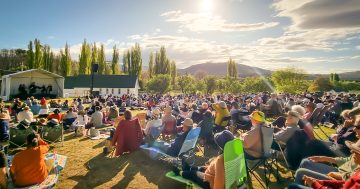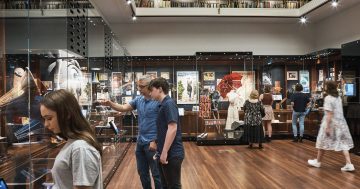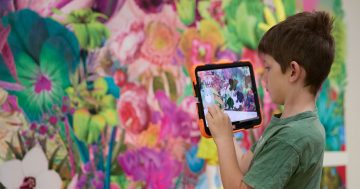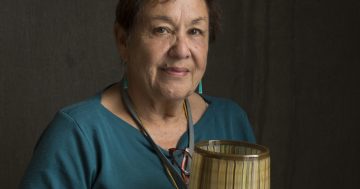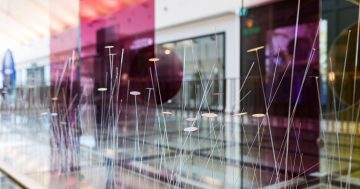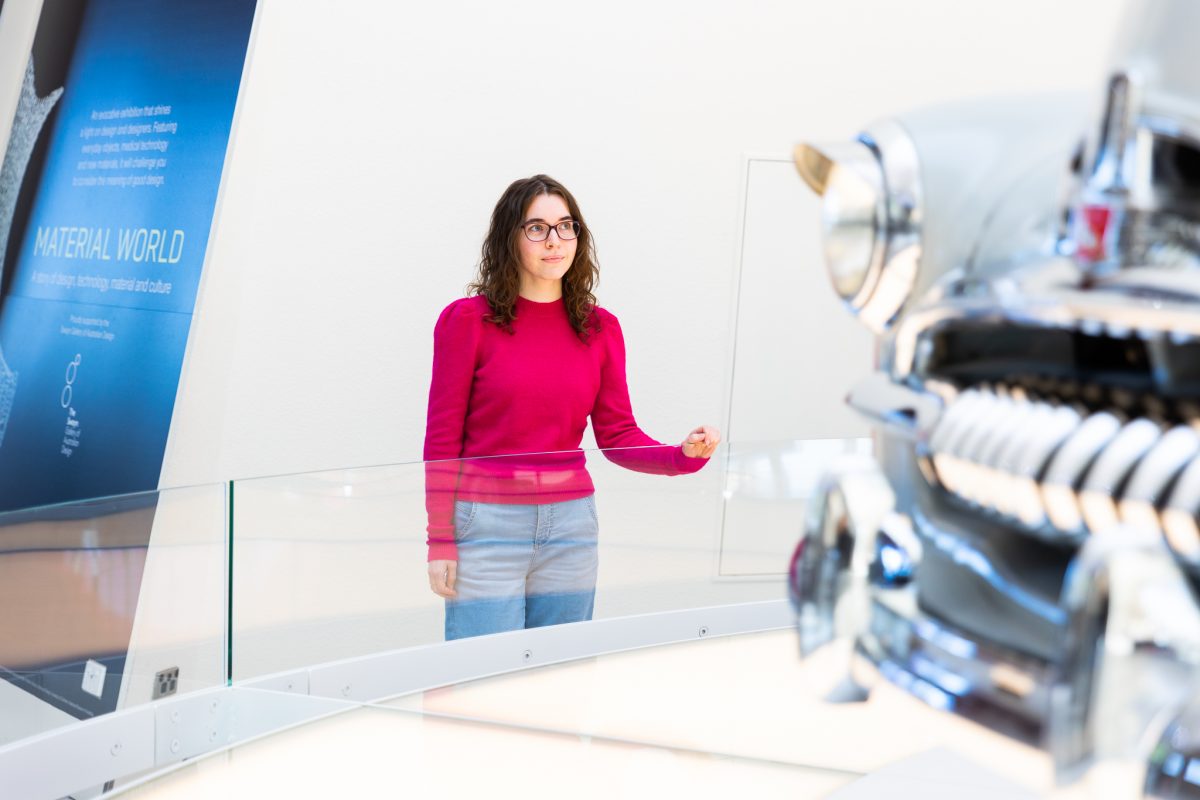
University of Canberra student Tia Priest-Willimott is a regular user of the University’s Cultural Pass. Photo: Tyler Cherry.
Canberra is known for many things – a bustling foodie scene, bush landscapes, and hot air balloon-dotted skies – but one standout benefit for those living in the nation’s capital is our vibrant and accessible arts culture.
The ACT is home to many of Australia’s national cultural institutions including the National Museum of Australia, National Gallery of Australia, the Australian War Memorial, and the National Library of Australia, to name a few.
But with TikTok, YouTube, and online events and exhibitions taking over the internet, is there still a place for in-person visits to these institutions?
Gen Z in particular is a demographic that might seem to lean towards consuming online content over in-person arts and culture, but according to 18-year-old Tia Priest-Willimott, there is still value in consuming Canberra’s arts scene in the flesh.
“I just find it really interesting to see all the history within museums, and all the artworks and the talents that everyone has in the world, and really getting to appreciate all that,” Ms Priest-Willimott says.
Ms Priest-Willimott, who is studying a Bachelor of Communication and Media (Journalism) majoring in Creative Writing at the University of Canberra is a regular user of the University’s Cultural Pass, a discounted yearly pass that provides holders with access to Canberra’s world of art, culture, and heritage.
The Cultural Pass is available to all enrolled University of Canberra students. Valued at over $350, annual membership for UC students is just $15.
“Because there are so many different cultural institutions [in Canberra], there’s generally always something going on, or a particular exhibition, that will draw me,” Ms Priest-Willimott says.
“I really do find it a benefit to go in person because it’s a completely different experience, you get to look a bit closer at what you want to.”
Ms Priest-Willimott says that while visiting cultural institutions is a hobby for her, she has been surprised by the number of her peers who also regularly attend museum or gallery exhibitions.
“There are quite a few of my friends who would be down to go along, because it is something different and interesting,” she says.
“Among some, there may still be that perception that visiting galleries is something you do with your parents though.”
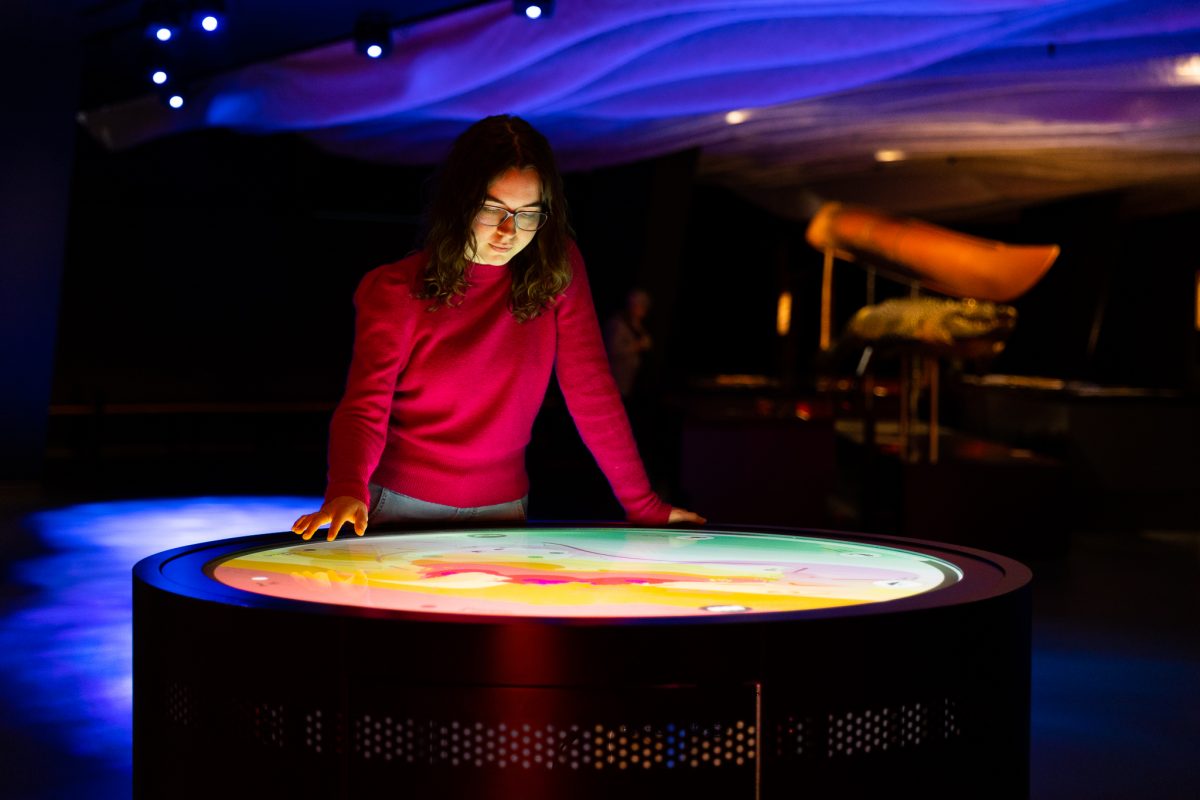
Whilst Ms Priest-Willimott often visits the cultural institutions with her friends, she believes there are still some in her generation with the perception that visiting galleries is something you do with your parents. Photo: Tyler Cherry.
In labelling the ACT as the arts and culture capital of Australia, the statistics tell a story of their own. ArtsACT data shows that the ACT has the highest attendance rate at cultural venues and events of any jurisdiction in Australia, and also has the highest cultural participation rate in the country.
Dr Denise Thwaites, an Assistant Professor in Digital Arts and Humanities at the University of Canberra, agrees that there is still a place for young people in cultural institutions in Canberra – and around the world.
“It’s fantastic, all the things that we have access to – the kinds of imagery, content, networks and cultural production that we can access online,” Dr Thwaites says.
“But at the same time, we’re multi-sensorial and embodied beings. We spend so much of our day in front of computers already, and we’re social beings – so we will be attracted to go and engage in arts and culture in these other kinds of spaces.”
The concept of a ‘third place’ also plays into the value of visiting cultural institutions in person, Dr Thwaites says.
“We are drawn to these other kinds of spaces that aren’t work, and aren’t home, but a place where community and friends can come together and share experiences,” she says.
“So as much as I agree that there can be fantastic stuff online, I don’t think that supplements other kinds of experiences through the city.”
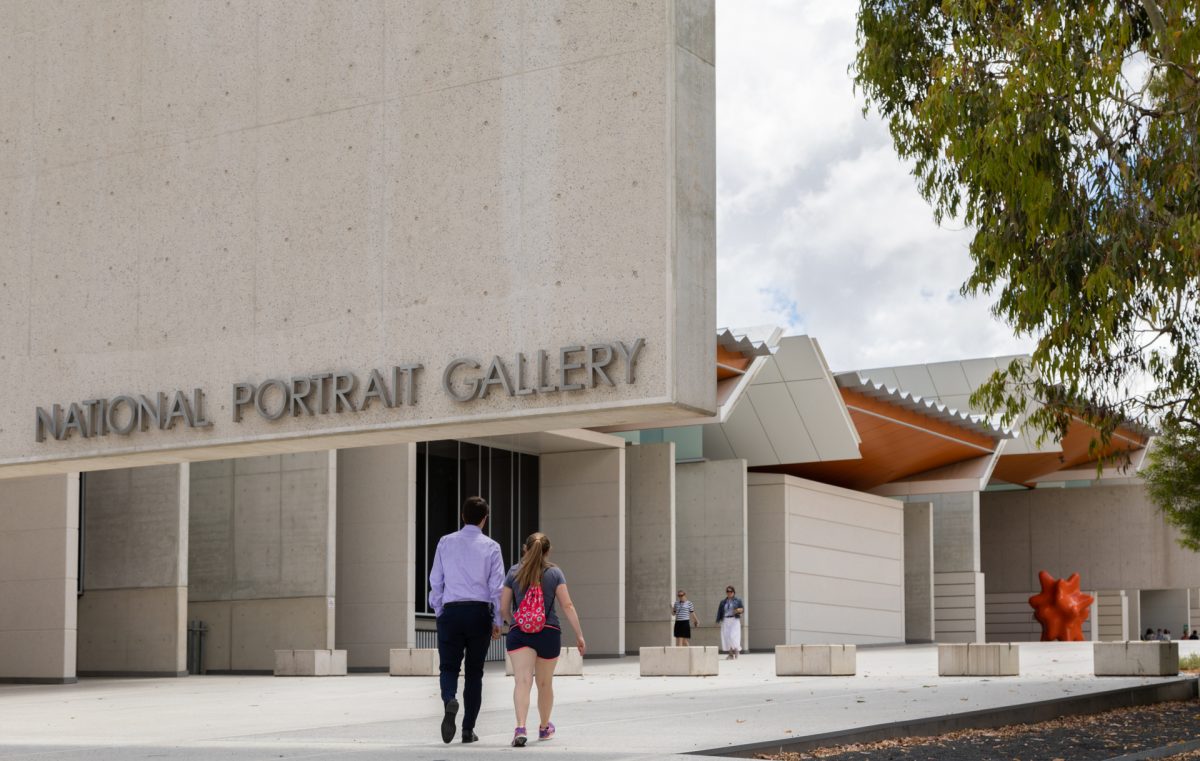
The National Portrait Gallery is one of the institutions along Lake Burley Griffin, alongside the National Library of Australia and the National Gallery of Australia. Photo: Michelle Kroll.
Canberra’s unique positioning and ease of transport also contributes to the high usage and accessibility of cultural institutions, with many of them located within a short walk or drive to each other.
Ms Priest-Willimott says that aspect made a big difference in her decision to purchase the Cultural Pass and utilise its benefits.
“It’s definitely a big drawcard for people, especially those who are studying degrees like mine, where it’s all about communications and creativity,” she says.
“For me, they’re a good starting place for writing stories and provide a good springboard for starting points in my degree.”
For more information visit UC Cultural Pass.












